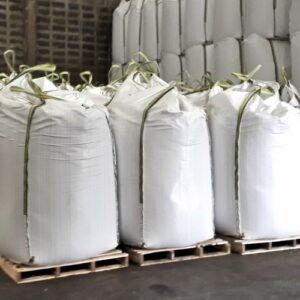Quantitative Trading Strategies: A Simple Guide for Everyone
Have you ever wondered how some traders seem to make smart, data-backed decisions while the rest of us rely on gut feelings? Welcome to the world of quantitative trading — where math, data, and technology meet the financial markets.
This guide will take you from “What is quantitative trading?” to understanding quantitative algorithmic trading, practical quantitative trading strategies, and even some of the best trading apps for beginners. Don’t worry — we’ll keep things simple and relatable.
Learn quantitative trading, what is quantitative trading, quantitative algorithmic trading, top quantitative trading strategies, and trading apps for beginners.
Introduction to Quantitative Trading
Imagine trying to catch waves at a beach. Some people jump in randomly and hope for the best, while others study the tides, patterns, and timing to ride the perfect wave. Quantitative traders are like the second group — they use data and mathematical models to identify the best “waves” in the market.
In this article, we’ll break down how quantitative trading strategies work, why they’ve become so popular, and how even beginners can get started using trading apps designed for learning and practice.
What is Quantitative Trading?
Let’s start with the basics. Quantitative trading (or “quant trading”) is a method of using mathematical models, data analysis, and algorithms to make trading decisions.
Instead of relying on emotions or intuition, a quantitative trader uses numbers and data — such as price movements, volume, and volatility — to find opportunities in the market.
Think of it like having a GPS for your trades. Instead of guessing where to go, you’re following a system built on facts, not feelings.
How Quantitative Trading Works
Quantitative trading works by following a structured process:
- Data Collection: Gather historical and real-time market data (like prices, volume, and trends).
- Model Building: Use mathematical models to identify profitable patterns.
- Backtesting: Test the strategy using past data to see how it would have performed.
- Execution: Use algorithms to automatically place trades when certain conditions are met.
- Monitoring: Continuously refine and improve the model based on results.
It’s like baking a cake — gather ingredients (data), follow a recipe (strategy), test it, and then perfect it over time.
The Role of Algorithms in Quantitative Trading
Algorithms are the “brains” behind quantitative algorithmic trading. These are sets of computer-coded rules that automatically execute trades based on defined criteria.
For example, an algorithm might say:
“Buy 100 shares of Apple if its price drops by 2% within one hour but sell if it rises by 3%.”
This automation allows trades to happen faster than any human could click a mouse — often in milliseconds.
Why Quantitative Trading Matters Today
In today’s fast-paced markets, human emotions can be a trader’s worst enemy. Fear and greed often lead to poor decisions.
Quantitative trading strategies remove these emotions. They rely purely on logic, discipline, and statistical evidence — making trading more consistent and scalable.
That’s why hedge funds, investment banks, and even retail traders are adopting quant methods to gain an edge.
Common Quantitative Trading Strategies
There are several types of quantitative trading strategies used by professionals. Let’s go through the most popular ones in plain English:
- Mean Reversion
- Momentum Trading
- Statistical Arbitrage
- Machine Learning-Based Models
- Pair Trading
- High-Frequency Trading (HFT)
Each of these has a unique approach to spotting market opportunities.
Mean Reversion Strategy Explained
This strategy is based on the idea that prices eventually “revert to the mean” — or return to their average value.
Think of it like a stretched rubber band: if a stock’s price moves too far in one direction, it tends to snap back to its normal level.
Quant traders use statistical tools to find these opportunities and profit when prices correct themselves.
Example:
If a stock that usually trades at ₹500 suddenly drops to ₹450, a mean reversion trader might buy it, expecting it to rise back to ₹500.
Momentum-Based Strategies
Momentum trading follows a simple logic:
“What goes up, tends to keep going up — until it doesn’t.”
These strategies look for assets that are moving strongly in one direction and jump on the trend.
Quantitative traders use momentum indicators and moving averages to identify these trends early.
Example:
If a stock has been steadily rising for several days, an algorithm might detect the trend and buy in — then exit when the momentum fades.
Statistical Arbitrage Strategies
Statistical arbitrage (or “stat arb”) involves taking advantage of temporary price differences between related assets.
It’s like spotting two stores selling the same product — one at ₹90 and another at ₹100. You’d buy from the cheaper one and sell at the higher price.
Quant traders use mathematical correlations to identify these short-term inefficiencies and profit from them before they disappear.
Machine Learning in Quantitative Trading
With the rise of artificial intelligence, machine learning (ML) has become a game-changer in quantitative trading.
ML algorithms can learn from vast amounts of data, recognize complex patterns, and improve their performance over time — something traditional models can’t do.
These systems can detect hidden trends that humans might miss and even adapt automatically to changing market conditions.
Tools and Platforms for Quantitative Trading
To build and run quantitative trading strategies, traders use various tools and platforms such as:
- Python & R for data analysis and modeling
- MetaTrader 5 (MT5) and NinjaTrader for backtesting and execution
- QuantConnect and AlgoTrader for developing and running automated strategies
- Bloomberg Terminal and TradingView for market data and analytics
You don’t need to be a coder to start — many platforms now have drag-and-drop interfaces for strategy building.
Trading Apps for Beginners
If you’re just starting out, don’t worry — there are several trading apps for beginners that make learning and experimenting easy.
Some beginner-friendly apps include:
- Zerodha Varsity & Kite App (India) – Great for learning and paper trading
- Robinhood (US) – Simple interface and zero commission
- Firstock – Offers advanced charts, data, and strategy testing tools
- TradingView – Ideal for strategy visualization and community ideas
- EToro – Allows copy trading from experienced traders
These apps give beginners the chance to explore trading with small capital or even in demo mode before going live.
How to Start Your Quantitative Trading Journey
Starting with quantitative trading doesn’t require a PhD in mathematics. Here’s a simple roadmap:
- Learn the Basics: Understand how markets work and what drives prices.
- Master Data Analysis: Learn Python, Excel, or R to handle data.
- Study Existing Strategies: Analyze what professionals use and why.
- Backtest Your Ideas: Use historical data to test performance.
- Go Live Gradually: Start small, monitor, and improve your system.
Remember, even the best traders started small — it’s about consistency and curiosity.
Risks and Challenges of Quantitative Trading
While quant trading sounds like the perfect money machine, it has its challenges:
- Overfitting: Models might perform well on past data but fail in real markets.
- Data Quality: Bad data leads to bad decisions.
- Market Changes: Strategies that worked last year may fail today.
- Technical Glitches: Even small coding errors can lead to large losses.
To manage these risks, always test thoroughly and use risk management tools like stop-loss orders and diversification.
The Future of Quantitative Algorithmic Trading
The future looks bright for quantitative algorithmic trading. With advancements in AI, big data, and cloud computing, algorithms are becoming smarter and faster.
Soon, we’ll see more integration of predictive analytics, neural networks, and even quantum computing in trading.
But one thing remains constant: human insight. Even the most advanced model needs human judgment to ensure it aligns with real-world logic.
Conclusion
In simple terms, quantitative trading is about letting data, not emotion, guide your financial decisions.
It combines technology, statistics, and strategy to give traders a structured, logical way to navigate unpredictable markets.
Whether you’re a curious beginner or an aspiring professional, learning quantitative trading strategies can open a world of opportunity. And with user-friendly trading apps for beginners, getting started has never been easier.
Remember — in trading, it’s not about being the fastest or luckiest; it’s about being the most prepared.
FAQs
- What is quantitative trading?
Quantitative trading uses mathematical models and data-driven strategies to make trading decisions instead of relying on emotions or opinions. - Is quantitative trading the same as algorithmic trading?
They’re closely related. Quantitative trading focuses on strategy development using data, while algorithmic trading is about executing those strategies automatically. - Can beginners start with quantitative trading?
Yes! Many trading apps for beginners offer tutorials, backtesting tools, and demo accounts to help you learn without risk. - Do I need coding skills for quantitative trading?
Not necessarily. While coding helps, several no-code platforms now allow you to create and test strategies visually. - Which are the best trading apps for beginners?
Some popular ones include Zerodha Kite, Robinhood, Firstock, TradingView, and eToro — great for learning and practicing.


